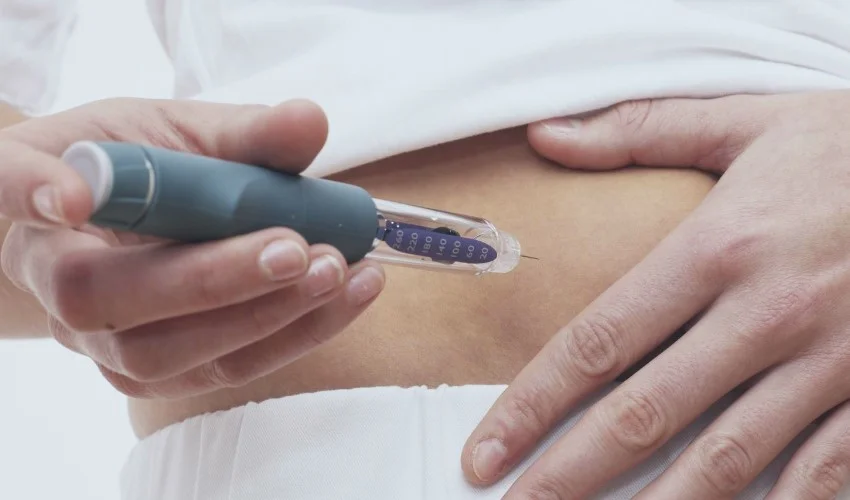Living with diabetes requires careful management of blood sugar levels to prevent complications and maintain overall health. Insulin, a hormone produced by the pancreas, plays a crucial role in regulating blood glucose levels. For individuals with diabetes, insulin management is essential for achieving optimal glycemic control. This article aims to provide comprehensive information on the types of insulin, administration methods, and monitoring techniques, empowering diabetic patients and their caregivers with the knowledge they need to effectively manage their condition.
Understanding Insulin and Diabetes
To comprehend insulin management, it’s important to have a basic understanding of insulin and diabetes. Diabetes is a chronic metabolic disorder characterized by high blood sugar levels due to either insufficient insulin production or the body’s inability to use insulin effectively. Insulin acts as a key that unlocks cells, allowing glucose to enter and be utilized for energy.
Types of Diabetes
There are three main types of diabetes:
Type 1 Diabetes
This autoimmune disease occurs when the immune system mistakenly attacks and destroys the insulin-producing cells in the pancreas. Individuals with type 1 diabetes require daily insulin injections or the use of insulin pumps to survive.
Type 2 Diabetes
This is the most common form of diabetes, usually developing in adulthood. It is characterized by insulin resistance, where the body’s cells become less responsive to insulin. In some cases, the pancreas may also fail to produce enough insulin. Type 2 diabetes is management is done through lifestyle modifications, oral medications, and eventually may require insulin therapy.
Gestational Diabetes
This type of diabetes occurs during pregnancy and usually resolves after childbirth. However, it increases the risk of developing type 2 diabetes later in life.
Types of Insulin
Insulin therapy involves the administration of exogenous insulin to regulate blood sugar levels. There are several types of insulin available, each with its own onset, peak, and duration of action. The selection of insulin depends on individual needs and treatment goals.
Rapid-Acting Insulin
Rapid-acting insulin analogs, such as insulin lispro, insulin aspart, and insulin glulisine, have a quick onset of action, usually within 15 minutes. They are typically taken just before or immediately after meals to control postprandial (after-meal) glucose spikes. These insulins reach their peak effectiveness within 1-2 hours and last for approximately 3-4 hours.
Short-Acting Insulin
Regular or short-acting insulin, including human insulin, takes effect within 30 minutes to an hour after administration. Its peak activity occurs within 2-3 hours, and the duration of action lasts around 3-6 hours. Short-acting insulin is usually injected 30 minutes before meals.
Intermediate-Acting Insulin
Intermediate-acting insulin, such as NPH insulin, has a delayed onset of action, typically within 1-3 hours after injection. It reaches its peak activity within 4-12 hours and can last up to 18-24 hours. Intermediate-acting insulin is often combined with rapid- or short-acting insulins to provide basal (background) insulin coverage.
Long-Acting Insulin
Long-acting insulin analogs, such as insulin glargine and insulin detemir, have a slow and steady onset of action. They provide a consistent basal level of insulin throughout the day, with no pronounced peak. These insulins can last for up to 24 hours and are usually administered once or twice daily to maintain basal insulin levels.
Insulin Administration Methods
Proper administration of insulin is crucial for achieving effective glycemic control. There are various methods of insulin delivery, including injection devices and insulin pumps.
Insulin Injections
Insulin injections involve using syringes, insulin pens, or insulin jet injectors to deliver insulin subcutaneously (under the skin). The injection site should be rotated within specific areas, such as the abdomen, thighs, or upper arms, to prevent lipohypertrophy (thickening or fatty lumps under the skin).
- Syringes: Insulin is drawn into a syringe from a vial and injected subcutaneously using a needle. Syringes come in different sizes, and smaller-gauge needles (such as 4-6mm) are commonly used for comfort and ease of use.
- Insulin Pens: Insulin pens are pen-shaped devices that come pre-filled with insulin cartridges or use disposable insulin pen needles. They offer convenient and discreet insulin administration and are especially beneficial for individuals with dexterity issues.
- Insulin Jet Injectors: Jet injectors use a high-pressure stream of insulin to penetrate the skin, eliminating the need for needles. This method may be suitable for individuals with needle phobia, but it is less commonly used.
Insulin Pumps
Insulin pumps are small electronic devices that deliver a continuous flow of rapid-acting insulin via a thin tube (catheter) inserted under the skin. The pump is typically worn on a belt or in a pocket, and the insulin dosage can be adjusted based on individual needs. Insulin pumps mimic the basal insulin secretion of a healthy pancreas and allow for more precise insulin delivery, often resulting in improved glycemic control.
It is worth noting that insulin pump therapy requires training and regular monitoring to ensure proper functioning and prevent complications.
Monitoring Insulin Therapy
Regular monitoring of blood glucose levels is essential to evaluate the effectiveness of insulin therapy and make necessary adjustments. There are several methods available for monitoring blood glucose levels.
Self-Monitoring of Blood Glucose (SMBG)
SMBG involves using a glucose meter to measure blood sugar levels at home. A small drop of blood obtained by pricking the fingertip with a lancet is applied to a test strip, which is then inserted into the meter. The meter provides a digital reading of the blood glucose level within seconds.
Regular SMBG helps individuals understand how their blood sugar levels respond to different factors such as food, physical activity, medication, and stress. It enables informed decision-making regarding insulin dosages, diet modifications, and overall diabetes management.
Continuous Glucose Monitoring (CGM)
CGM systems provide real-time or near-real-time readings of glucose levels throughout the day. A small sensor is inserted under the skin to measure interstitial fluid glucose levels. The sensor transmits data wirelessly to a receiver or smartphone, displaying glucose trends, alerts for high or low glucose levels, and providing valuable insights into patterns and variations.
CGM systems offer a more comprehensive view of glucose control, aiding in the identification of glycemic patterns and the assessment of treatment efficacy. They can help detect hypoglycemia (low blood sugar) and hyperglycemia (high blood sugar) episodes, enhancing overall diabetes management.
Effective insulin management is crucial for individuals living with diabetes to achieve and maintain optimal glycemic control. Understanding the types of insulin, administration methods, and monitoring techniques empowers diabetic patients and their caregivers to make informed decisions regarding their treatment. By adhering to proper insulin management practices and regularly monitoring blood glucose levels, individuals can lead healthier lives and reduce the risk of diabetes-related complications.
Remember, it is important to consult with healthcare professionals to determine the most suitable insulin regimen and to receive personalized guidance based on individual needs and medical history. With the right knowledge and support, individuals with diabetes can successfully navigate insulin management and live well with their condition.




